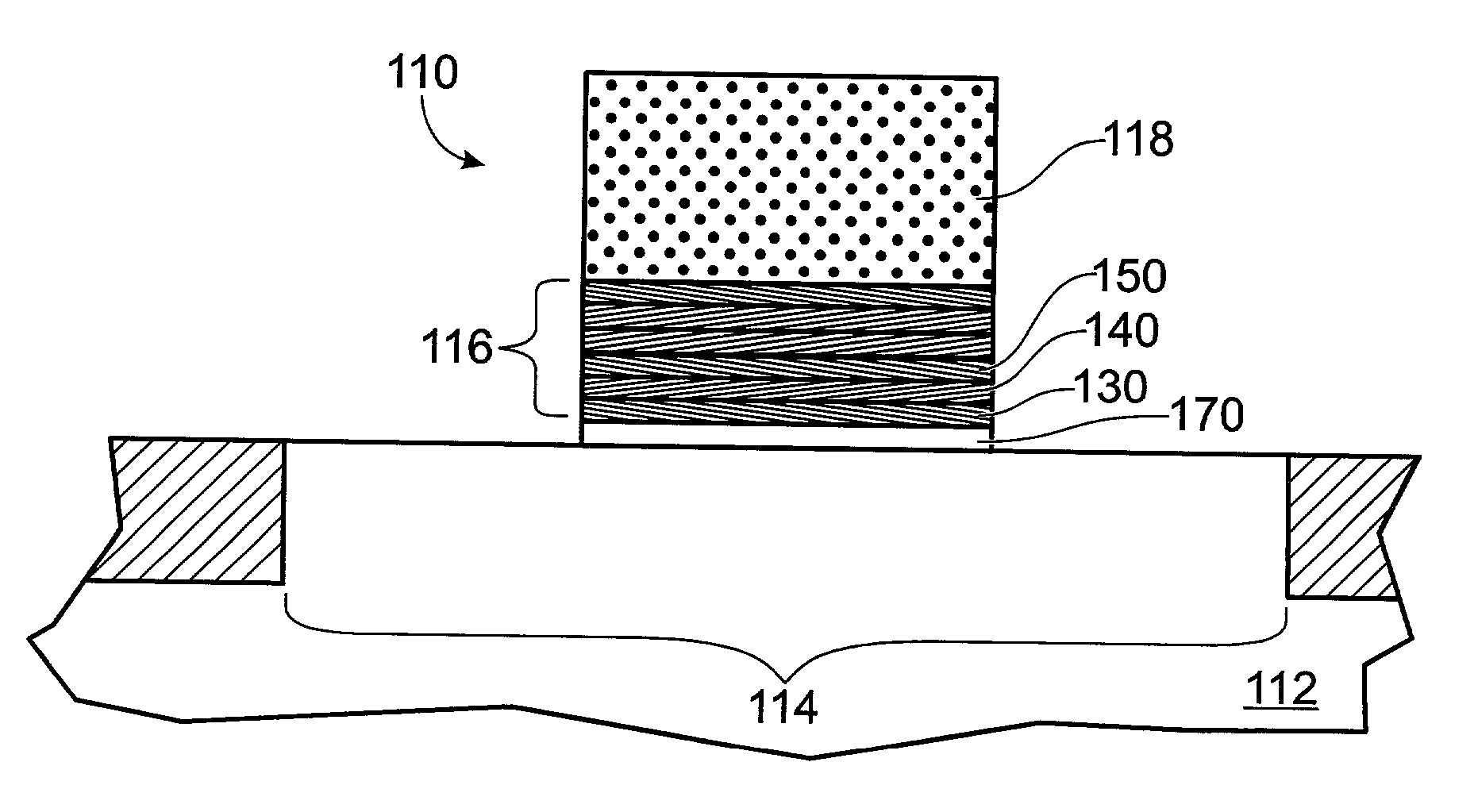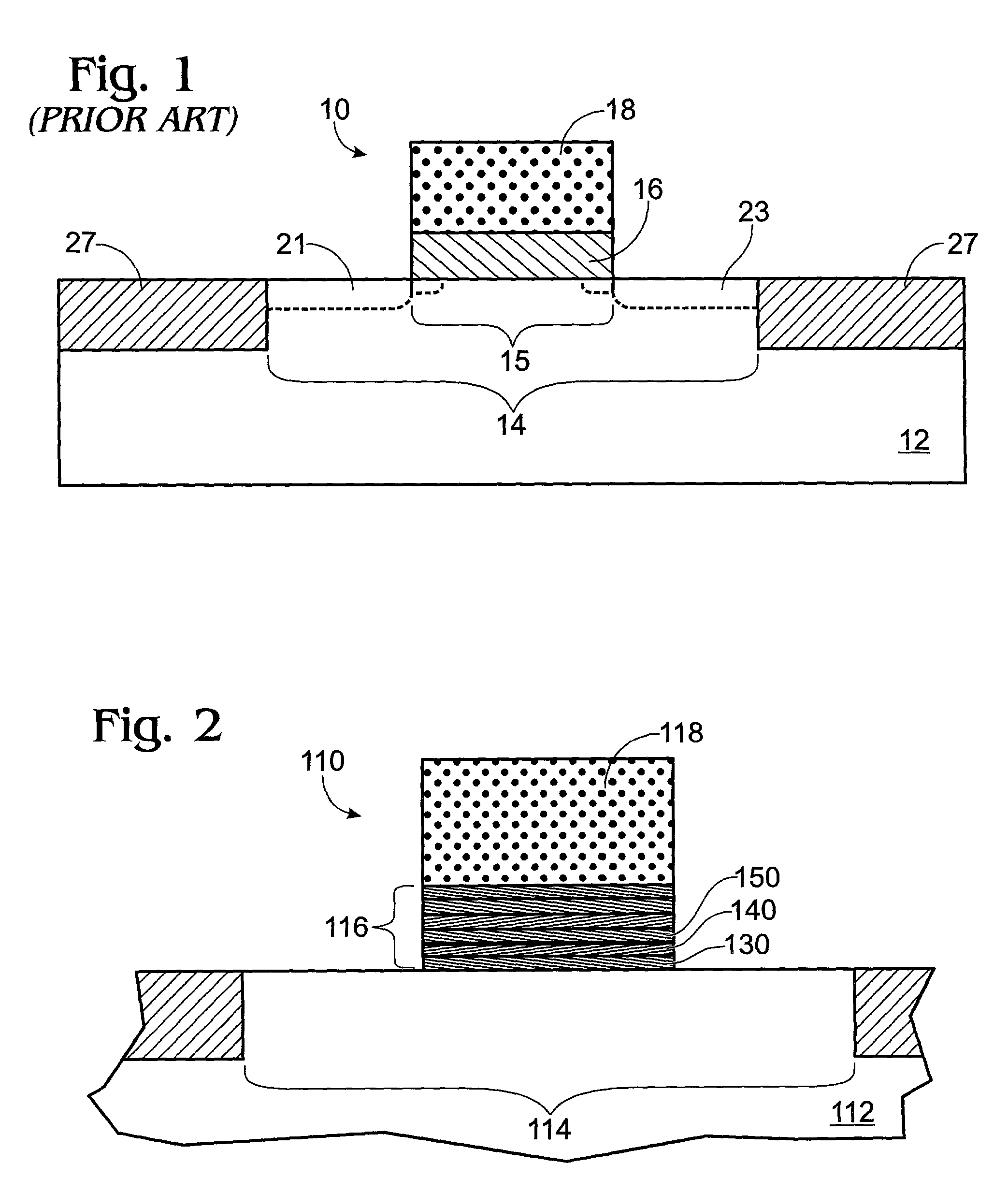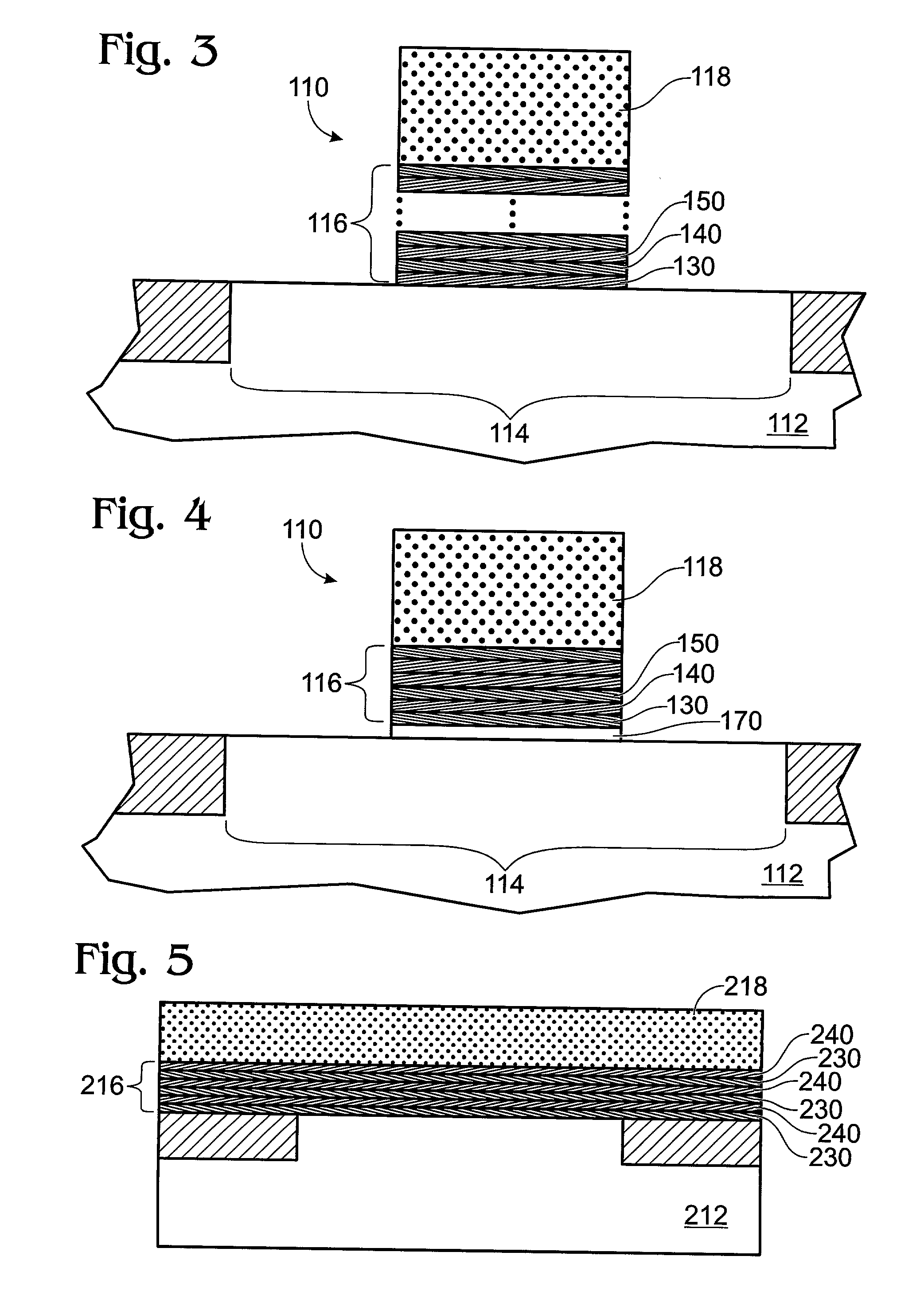Method of forming a multilayer dielectric stack
a technology of dielectric stack and multilayer layer, which is applied in the manufacture of semiconductor devices, nanostructures, electrical apparatus, etc., can solve the problems of non-uniform electrical fields, very rough surface of film, and development of crystalline structures under normal integrated circuit manufacturing conditions, so as to reduce or eliminate the formation of crystalline structures, reduce the tunneling current, and improve device performance
- Summary
- Abstract
- Description
- Claims
- Application Information
AI Technical Summary
Benefits of technology
Problems solved by technology
Method used
Image
Examples
Embodiment Construction
[0029] Referring now to the drawings, which are for illustration purposes (not to scale), FIG. 1 shows a common prior art integrated circuit (IC) structure, specifically a MOS transistor gate structure 10. MOS transistor gate structure 10 formed on a semiconductor substrate 12 above an active area 14 containing a channel region 15. MOS transistor gate structure 10 has a silicon dioxide dielectric layer 16 located above channel region 15 having a width. An electrode 18, which is typically doped polysilicon, is formed above the dielectric layer 16 to complete the gate structure 10.
[0030] A completed MOS transistor will also include source region 21, drain region 23 and field isolation region 27, which are illustrated in FIG. 1 and in some other figures. But, these features will not be further described or identified as they are well known to those skilled in the art. Throughout the remainder of this description structures analogous to the MOS transistor gate structure 10 will often be...
PUM
 Login to View More
Login to View More Abstract
Description
Claims
Application Information
 Login to View More
Login to View More - R&D
- Intellectual Property
- Life Sciences
- Materials
- Tech Scout
- Unparalleled Data Quality
- Higher Quality Content
- 60% Fewer Hallucinations
Browse by: Latest US Patents, China's latest patents, Technical Efficacy Thesaurus, Application Domain, Technology Topic, Popular Technical Reports.
© 2025 PatSnap. All rights reserved.Legal|Privacy policy|Modern Slavery Act Transparency Statement|Sitemap|About US| Contact US: help@patsnap.com



